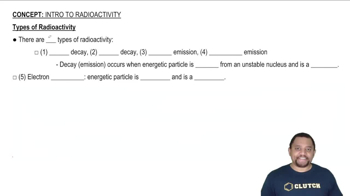Here are the essential concepts you must grasp in order to answer the question correctly.
Solubility Product Constant (Ksp)
The solubility product constant (Ksp) is an equilibrium constant that applies to the solubility of sparingly soluble ionic compounds. It is defined as the product of the molar concentrations of the ions in a saturated solution, each raised to the power of their coefficients in the balanced chemical equation. For example, for barium sulfate (BaSO4), Ksp = [Ba²⁺][SO₄²⁻]. Understanding Ksp is crucial for predicting whether a precipitate will form in a given reaction.
Recommended video:
Solubility Product Constant
Precipitation Reaction
A precipitation reaction occurs when two soluble salts react in solution to form an insoluble compound, known as a precipitate. In this case, barium nitrate and sodium sulfate react to form barium sulfate, which precipitates out of the solution. The formation of a precipitate can be predicted using Ksp values, and the extent of the reaction can be analyzed by measuring the concentrations of the reactants and products before and after the reaction.
Recommended video:
Radioactive Tracers
Radioactive tracers are isotopes that are used to track the movement of substances in chemical reactions or biological processes. In this experiment, sulfur-35 is used to label sodium sulfate, allowing for the measurement of its concentration before and after the reaction. By comparing the initial and final activities of the solution, one can determine how much of the sodium sulfate has reacted and thus calculate the Ksp of the precipitate formed.
Recommended video:




